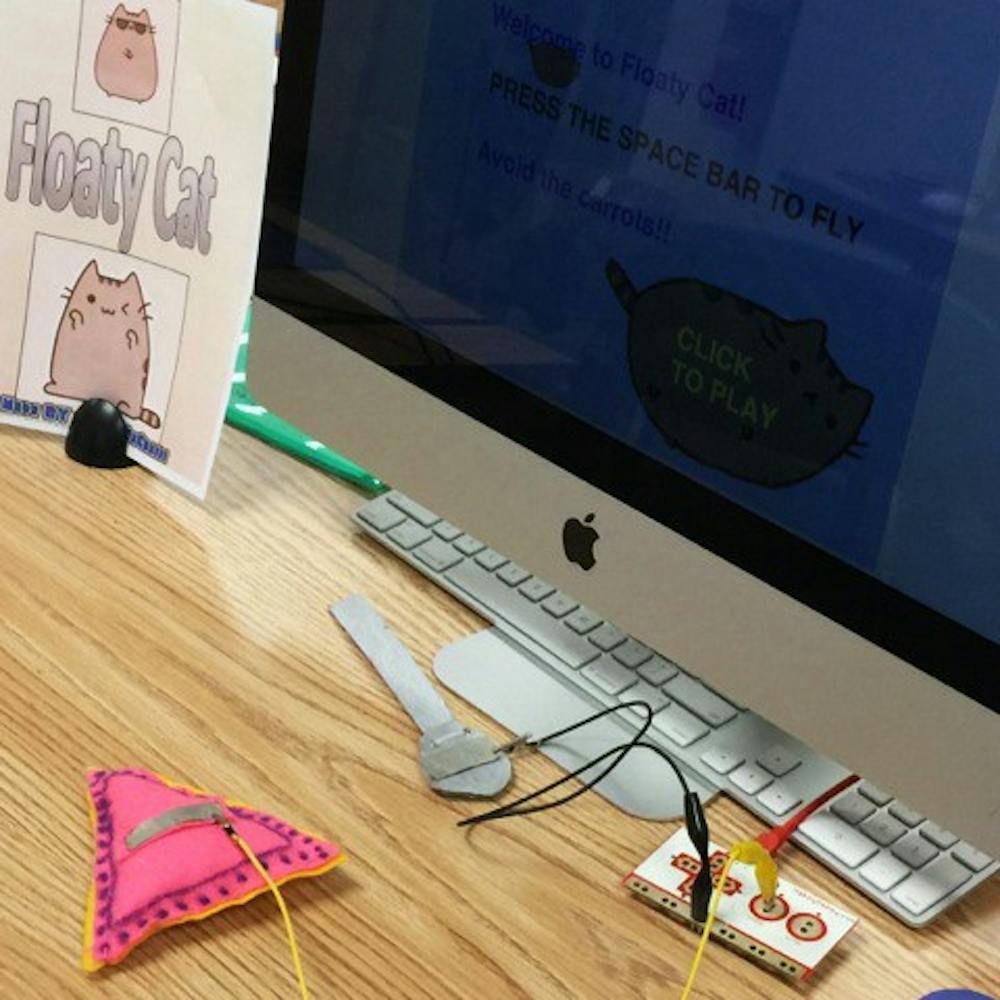Snoozing the alarm, checking text messages and playing games of Trivia Crack all come down to lines of code — which students as young as 12 are learning to write.
At Penn Alexander School, Graduate School of Education professor Yasmin Kafai developed a middle school-level coding course to engage students in the art of video game design. Kafai’s course speaks to a larger trend in advocacy for computer science as a part of formative education.
Besides the basic of reading, writing and math, exposure to coding can add a unique skill to students’ tool kits. According to Kafai, “the goal of the course at Penn Alexander is not to force students to become programmers but rather to provide them with a general literacy in the subject matter.”
Using the scratch software developed by Kafai, students create their own video games, which are then tested by their peers outside of the class in an arcade day.
“Arcade day, which was held this past week at Penn Alexander, gives young coders the opportunity to see what worked well with their games and what could be improved,” Kafai added.
Upon entrance into high school, students who have been exposed to the beginner coding course have the option to attend the Philadelphia Science Leadership Academy where they are given more complex coding projects and design experiments. Like the Penn Alexander students, many computer science majors at Penn first developed an interest in coding early in life.
Engineering sophomore Josh Karnofsky said he first became interested in coding when he took AP Computer Science in his senior year of high school.
“The course allowed me to realize early on that I was interested in studying computer science further,” Karnofsky said. “A lot of my friends in computer science at Penn who did not have that opportunity in high school were unsure of whether or not they were really interested in the field of study or whether they would even be able to understand it. In my experience I have found that a lot of students are interested in computer programming, but really do not know what a computer science curriculum would entail.”
Engineering and College sophomore Lucas Dagostino was one of those students with zero exposure to the field of study when he first arrived on campus.
“I came into the engineering program, curriculum deferred, and I thought that I may be a systems engineer,” Dagastino said. “I took CIS110 and liked it more than all my other classes and decided to pursue it. I personally would have wanted more exposure prior to entrance into Penn because the applicability of computer programming spans many different fields of study and it also gives students a unique way of thinking about how to solve real world problems.”
For many experts, this exposure has real world applications beyond the classroom.
“Understanding the computer and how it works is empowering,” said Director of the Computer Graphics and Game Technology Masters Program Stephen Lane. “You don’t always necessarily have to be a consumer, but rather you can use the computer to enable your everyday activities and assignments.”
Lane added that “blended, mixed learning,” where computer science is assimilated into the core curriculum of schools, would be the optimal way to incorporate it into the classroom.
Kafai agrees with this idea.
“If you are in science and learning about ecology, why not design program simulations to study experiments? If you are in mathematics, why not work with databases?” she said.
While there are a limited number of certified computer science and programming teachers for high school and design experiments can be expensive, Kafai said that “we are moving in the right direction with technology and education.”



